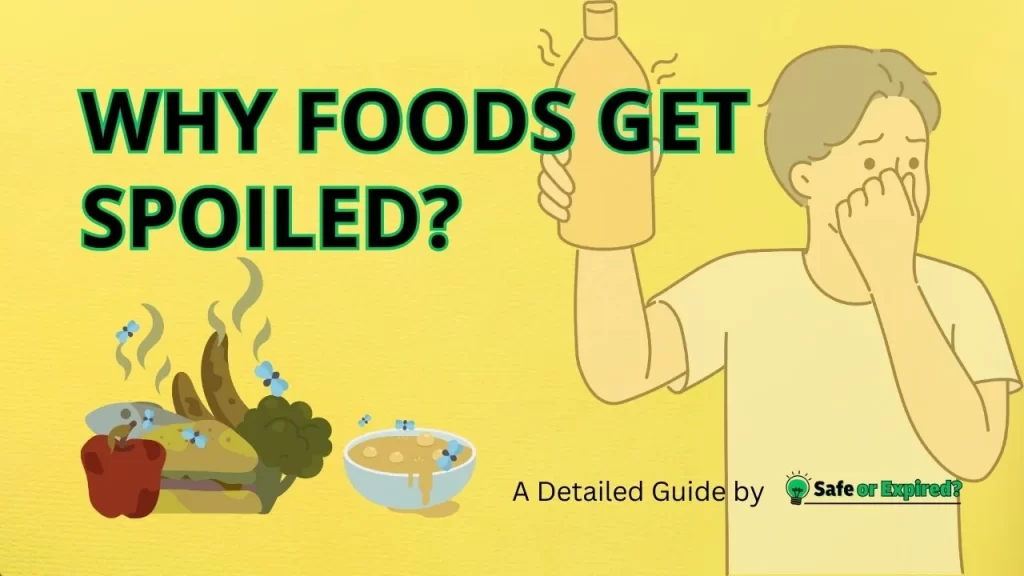Have you ever wondered, “Why do foods get spoiled?” Well spoilage can happen for various reasons, like improper storage, contaminated utensils, physical damage, and many more. In this article, we’ll explore all the primary causes of food spoilage and provide you with effective strategies to keep your food fresh longer.
Let’s start.
Why Do Foods Get Spoiled? [All the Causes]
Foods spoil due to bacteria growth, exposure to air, and chemical changes. Common mistakes like leaving cooked food unrefrigerated, using contaminated utensils, or improper storage lead to faster spoilage. Spoiled foods often develop off smells, flavors, and textures, indicating they are no longer safe to consume.
Leaving Cooked Food on the Counter
When you leave cooked food on the counter, it enters what food safety experts call the “Danger Zone.” This zone is, in fact, a temperature range – between 40°F and 140°F. According to USDA, the reason it is dangerous is that bacteria can grow rapidly. Foods left out for more than two hours in this zone can start to spoil and become unsafe to eat.
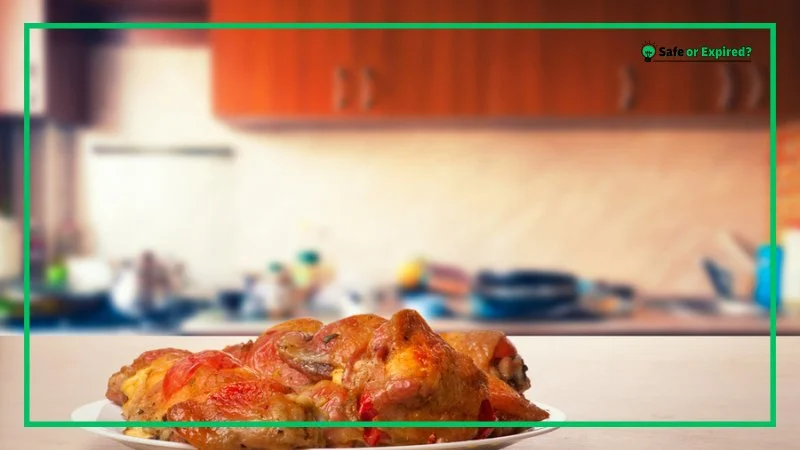
Microorganisms, including bacteria, are the primary culprits behind food spoilage. Common bacteria are:
| Bacteria | Optimal Conditions | Symptoms in Foods |
| Salmonella | Room temperature | Gastrointestinal distress |
| E. coli | Warm, moist conditions | Spoilage, foodborne illness |
| Listeria | Cooler temperatures | Infections, spoilage |
Note that bacteria can double in number every 20 minutes under ideal conditions. This exponential growth can quickly turn a wholesome meal into a potential health hazard.
According to the Centers for Disease Control and Prevention (CDC), one in six Americans gets ill due to eating contaminated foods or beverages each year. This statistic highlights the importance of proper food storage and handling to prevent spoilage and protect public health.
Using Contaminated Utensils or Cookware
Utensils and cookware can harbor bacteria from previous uses, especially if they’ve been in contact with raw meat, poultry, seafood, or eggs. These bacteria can survive on surfaces for a surprisingly long time.
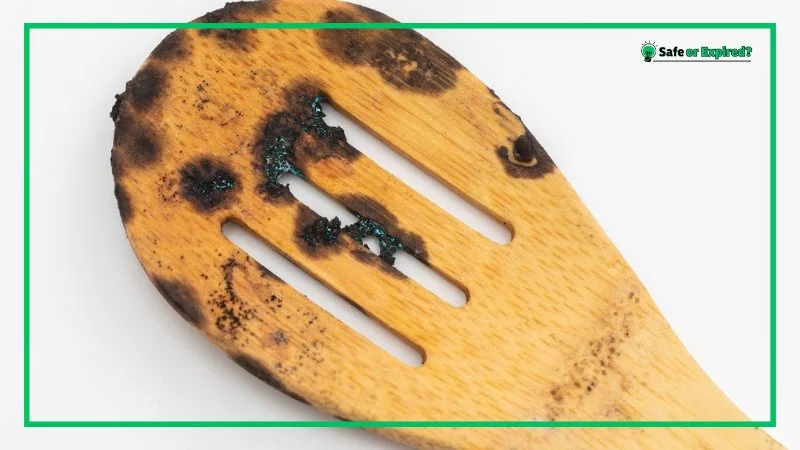
For example, when a cutting board used to chop raw chicken isn’t washed properly before slicing vegetables for a salad, the bacteria from the chicken can be transferred to the vegetables. This type of cross-contamination is a common pathway for spoilage bacteria to spread.
Once bacteria have been transferred to a food item, they can multiply rapidly. According to TRF Food Shelf, it will happen more quickly if the food is stored at room temperature. This growth is facilitated by the nutrients found in the food, which serve as a food source for the bacteria, allowing them to thrive and multiply. As the bacteria grow, they produce byproducts that can change the taste, smell, texture, and color of the food, ultimately leading to spoilage.
Common culprits include Staphylococcus aureus and Escherichia coli, which are known to be transferred via contaminated surfaces. These bacteria not only cause food to spoil but can also lead to serious foodborne illnesses if the contaminated food is consumed.
Using Ingredients That Are Already Spoiled
Scientific World Journal highlights that spoiled foods typically exhibit telltale signs such as off odors, discolorations, and slimy textures. For instance, milk that has gone bad may develop a sour smell and a lumpy texture. When such spoiled ingredients are mixed with fresh ones, the spoilage agents (like bacteria or mold) can quickly spread throughout the dish. This compromises its overall quality and safety.
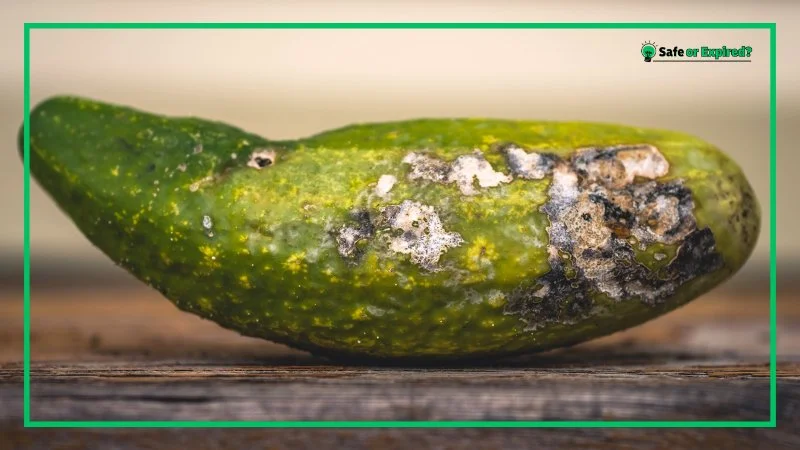
Note that spoilage microorganisms produce enzymes that break down proteins, fats, and carbohydrates in food. This leads to significant changes in flavor, texture, and appearance. This biochemical activity not only makes the food unappetizing but can also render it unsafe, as some microorganisms can produce toxins.
Physical Damage
According to the Foods Journal dedicated to Food Packaging and Preservation, physical damage to food items, such as bruising in fruits or vegetables and tears in meat, can also lead to faster spoilage. When fruits or vegetables are bruised, the cells in the damaged area become ruptured. This releases nutrients that feed bacteria and fungi present on the surface, allowing them to proliferate.
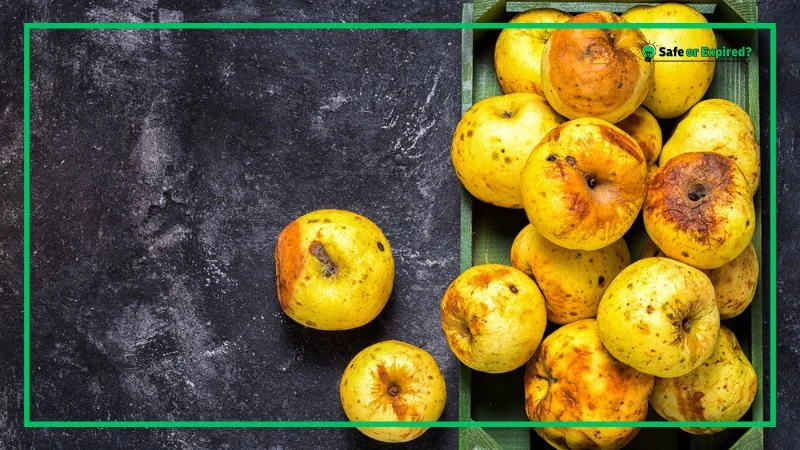
For example, a bruised apple not only changes color at the site of impact but can also become moldy much faster than an intact one.
Similarly, any tears in meat or fish expose the more susceptible inner tissues to bacteria that are present on the surface or in the environment. These exposed areas can quickly become hotspots for bacterial growth, leading to spoilage that spreads to the rest of the product.
Mixing Fresh Food With Older Items
Older food items often harbor a higher load of bacteria and fungi due to their prolonged exposure to the environment. When these are mixed with fresh ingredients, the microorganisms get a new source of nutrients from the fresh food, allowing them to thrive and multiply.
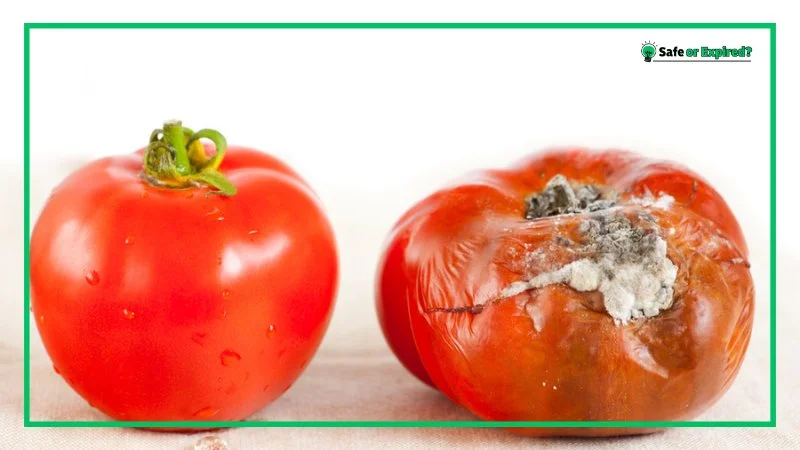
For example, using slightly moldy berries in a fresh fruit salad can introduce mold spores to the other fruits, accelerating the spoilage process across all the ingredients.
The spoilage process is catalyzed by the enzymes and toxins produced by the microorganisms present in older food items. These agents can act on fresh food, breaking down its structural integrity and nutritional quality. When this happens, you will observe spoilage symptoms like softening, off-flavors, and discoloration much faster than if the fresh food were stored separately.
Poor Hygiene Practices
According to Victoria’s Health Department, hands and kitchen surfaces are primary vectors for transmitting contaminants to food. For instance, if a chef handles raw chicken and then prepares a salad without washing hands or utensils, pathogens like Salmonella can easily transfer to the salad. Such cross-contamination is a leading cause of spoilage and foodborne illnesses.
Not maintaining clean cooking utensils, cutting boards, and countertops can lead to the buildup of bacteria and food residue, which not only leads to spoilage but also poses health risks.
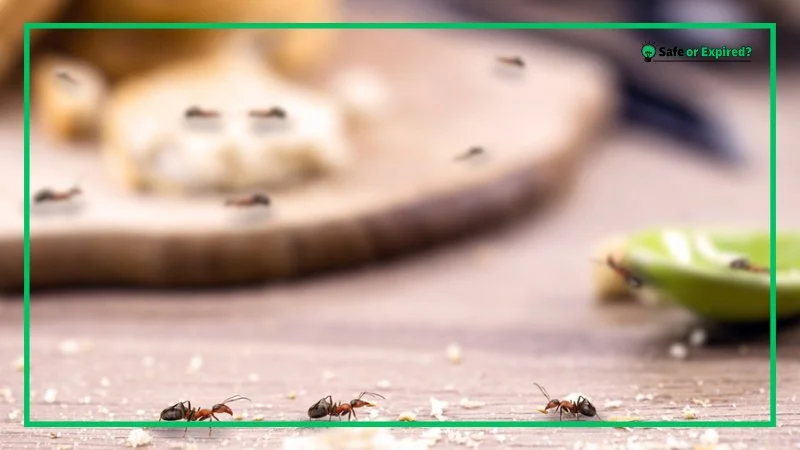
Inadequate Cooking
Many types of food, especially meats, poultry, seafood, and eggs, contain harmful bacteria that can only be eliminated when cooked to a sufficient temperature. For instance, poultry meat should be cooked to an internal temperature of 167 to 170°F to ensure that harmful pathogens like Salmonella and Campylobacter are destroyed.
Failure to Refrigerate Promptly
Freezing food slows down microbial growth and biochemical reactions, extending shelf life. Different techniques like slow freezing or individual quick freezing (IQF) affect the size of ice crystals formed, which can influence the texture and quality of the food when thawed (BioMed Central).
Not refrigerating perishable foods promptly after purchase or cooking is another major cause of food spoilage. According to a study published in IJCMAS, refrigeration slows down bacteria and extends the food’s shelf life by keeping it at temperatures that inhibit bacterial activity.
Failing to refrigerate food promptly can lead to visible spoilage signs, such as mold growth, as well as less obvious (but harmful) bacterial proliferation.
Overstocking the Fridge
When a refrigerator is too full, the air can’t circulate freely around the food items. This can create warm spots in the fridge where the temperature rises above the recommended 40°F. Foods stored in these warmer areas are at a higher risk of spoiling due to accelerated bacterial growth.
For instance, perishables like dairy products or fresh produce placed in these spots may spoil quicker than items stored in a well-ventilated refrigerator.
Improper Thawing of Frozen Foods
According to USDA, thawing food at room temperature or in lukewarm water can cause the food to enter the danger zone (between 40°F and 140°F) while the inside remains frozen. This encourages bacterial growth on the surface before the interior is fully thawed.
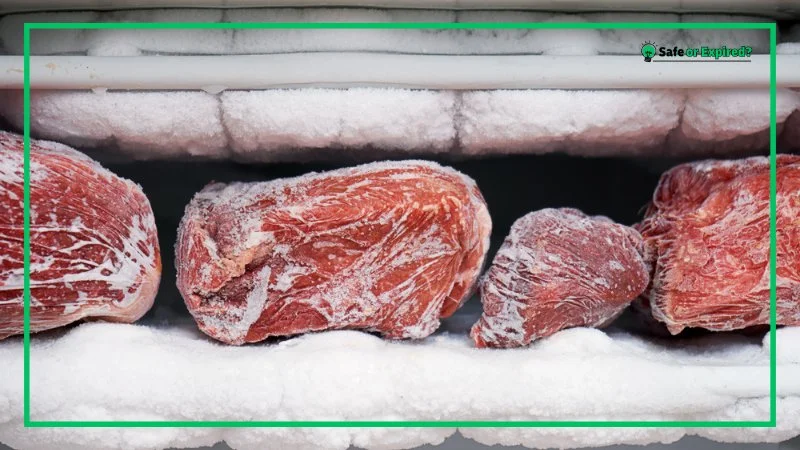
For example, thawing chicken on the kitchen counter can allow bacteria to multiply on the meat’s surface well before the inside is thawed and cooked.
Ignoring the Signs of Spoilage
Ignoring the signs of spoilage is a common reason food continues to deteriorate without intervention. Many individuals may overlook subtle signs or misinterpret them as minor or non-threatening, leading to the consumption of spoiled foods.
Early signs of spoilage, such as slight discolorations, off-smells, or a tacky texture, can often be subtle and easy to dismiss. For example, slightly off-smelling meat or slightly soft vegetables might not be immediately recognized as spoiled, especially if they are used in cooked dishes where other flavors overpower the off-taste.
This oversight allows the bacteria or mold causing the spoilage to continue growing, further degrading the food’s quality and safety.
When examining the many factors that lead to food spoilage, it’s helpful to look at how different types of food are affected. This can guide us on how to best store and handle various ingredients.
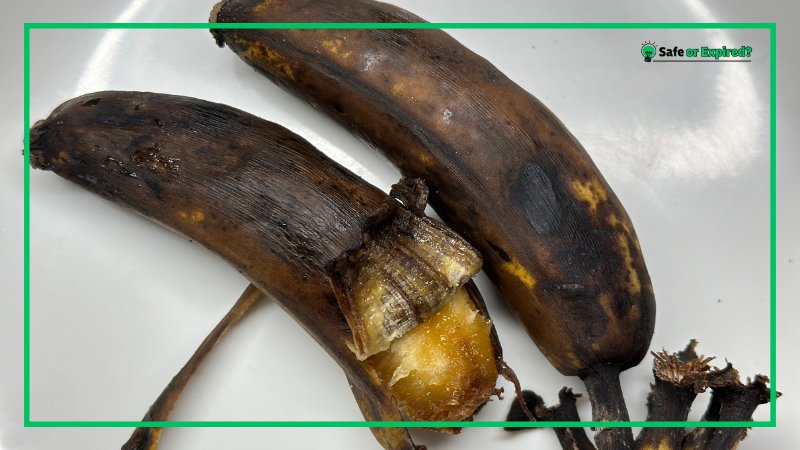
For example, lentils are a common staple in many kitchens. But do they spoil, and does it matter if they’re cooked or uncooked? To find out, check out this article “Do Lentils Expire? (Cooked vs Uncooked Comparison).”
Not Using Food Preservatives Properly
The improper use of food preservatives can fail to inhibit the growth of spoilage-causing microorganisms, leading to faster degradation of the food product. Preservatives must be used correctly to be effective in extending the shelf life.
The Encyclopedia of Food and Health highlights that preservatives like salt, sugar, and acids work by creating environments that are inhospitable to microbial growth. However, incorrect quantities or improper methods of application can render these preservatives ineffective.
For instance, insufficient curing of meats or inadequate acidification of pickles can lead to spoilage, as the levels of preservatives may not be high enough to prevent microbial growth. This misuse not only fails to preserve the food but may also accelerate spoilage by providing bacteria with a favorable medium to grow if the preservative balance is not adequately maintained.
Not Drying Washed Fruits and Vegetables
Moisture is one of the primary factors that encourage bacteria and mold on food surfaces. When fruits and vegetables are washed and not adequately dried, the residual water on their surfaces provides the perfect condition for these microorganisms to thrive.
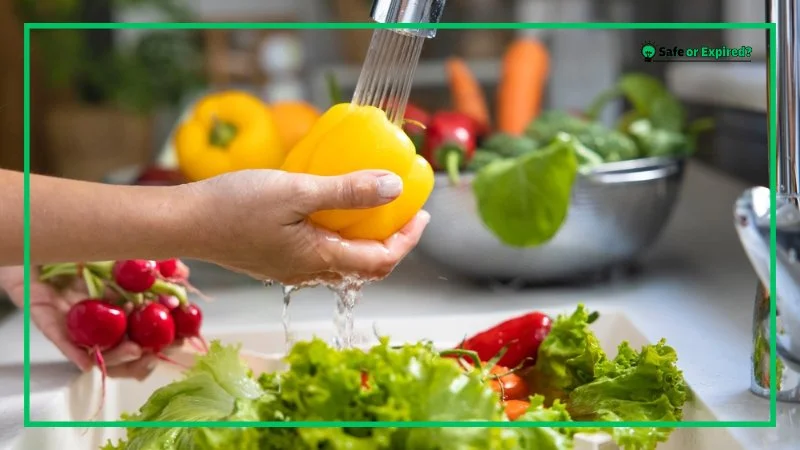
For instance, leafy greens that are stored while still damp can quickly become slimy and develop mold, reducing their shelf life and usability.
This moisture can also seep into the crevices and natural folds of produce, which are already prone to microbial growth due to their structure. Such conditions not only promote the rapid proliferation of spoilage organisms but also make it harder to visually identify early signs of decay due to the moisture masking subtle changes in texture and color.
When discussing food spoilage, you should also learn some extra interesting things. For example, we all know that carrots are a versatile vegetable. But what happens when they sit in the fridge for too long? Can you still eat them, or is it time to toss them? For a detailed look into the risks of eating expired carrots and safety tips, don’t miss “Can You Eat Expired Carrots? Yes or No? (Safety Guide).”
What To Do When Foods Get Spoiled?
When food spoils, it’s important to discard it immediately to avoid health risks. Contaminated food should be sealed in a bag to prevent the spreading of odors or bacteria before being disposed of. Make sure to clean any containers or surfaces that touch the spoiled food to keep your kitchen clean and hygienic.
Identify and Isolate Spoiled Items
First, identify which items are spoiled. Signs of spoilage may include foul odors, slimy textures, discoloration, or the presence of mold. Once identified, isolate these items immediately to prevent the spread of pathogens to other foods.
Dispose of Spoiled Foods Safely
Dispose of the spoiled items in a way that avoids further contamination. So, wrap them tightly. You can use plastic or place the items in a sealed bag before throwing them in the trash. This prevents any spillage or contact with other items and pests.
Clean and Disinfect All Affected Areas
After disposing of the spoiled food, clean and disinfect any surfaces or containers that came into contact with it. Use hot, soapy water followed by a disinfectant to ensure all bacteria and spores are eradicated. This includes cutting boards, countertops, and storage bins.
Check for Cross-Contamination
Inspect nearby foods and storage areas for any signs of cross-contamination. Spoilage can sometimes spread, especially in confined spaces like refrigerators or pantries. If there’s any doubt about the safety of other items, it’s safer to dispose of them as well.
Learn From the Experience
Reflect on what might have caused the food to spoil. Was it left out too long? Was the refrigerator set at the wrong temperature? Use this as an opportunity to improve your food storage and handling practices to prevent future spoilage.
Handling spoiled food carefully and taking steps to prevent future incidents are essential for maintaining food safety and minimizing waste.
7 Proven Tips to Avoid Food Spoilage
To avoid food spoilage, refrigerate perishables quickly, keep food covered, and maintain proper fridge and freezer temperatures. Use older items first, store dry goods in cool, dry places, thaw foods safely, and regularly clean storage areas. These practices help keep food fresh and reduce the risk of contamination.
Store Foods at the Correct Temperature
Ensure that your refrigerator and freezer are set to the appropriate temperatures. Keep your fridge at or below 40°F (4°C) if you want your food to stay fresh. For the freezer, Food Safety suggests 0°F (-18°C). These temperatures help slow bacterial growth and keep your food safe.
Keep Your Refrigerator Organized
An organized refrigerator helps ensure that air circulates properly and that all items are kept at a stable temperature. Avoid overstocking, which can block airflow and create warm spots that accelerate spoilage.
These are the refrigeration and freezing guidelines:
| Food Type | Refrigeration Temp | Freezing Temp | Notes |
| Meats | Below 40°F | 0°F | Store in the coldest part of the fridge |
| Dairy | Below 40°F | Not recommended | Keep dairy products in original containers |
| Vegetables | 34°F – 40°F | 0°F to -10°F | Wrap in paper towel for moisture control |
Use Proper Containers
Store food in air-tight containers to protect it from air and moisture, which can hasten spoilage. Clear containers allow you to see what’s inside, helping you keep track of leftovers and use them before they spoil.
Practice First In, First Out (FIFO)
When stocking your pantry or fridge, use the FIFO method: First In, First Out. Put new items at the back and older items at the front to make sure you use them before they spoil.
Understand Expiry Dates
Pay attention to the expiration and best-before dates on food packaging. These dates are good indicators of when a product might start to decline in quality and safety. However, use your senses to assess whether food is still good to eat, as some products may last longer than indicated.
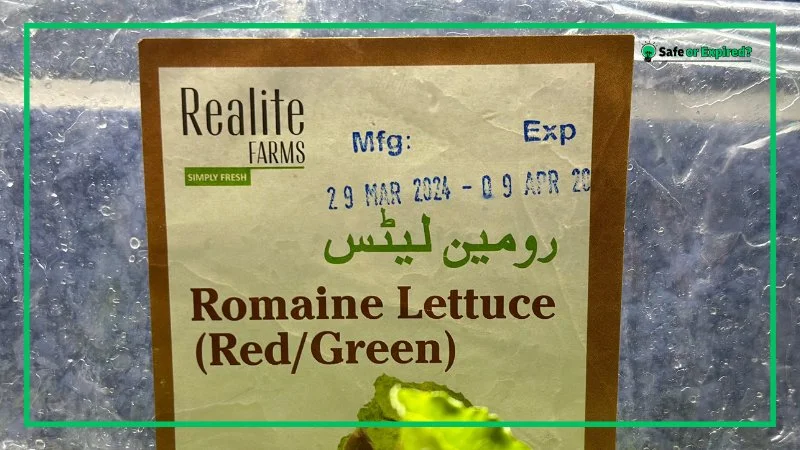
Dry Produce After Washing
Removing moisture from food significantly reduces the possibility of microbial growth. Dried fruits, jerky, and powdered products are examples where dehydration is used to extend shelf life. This method preserves food by significantly lowering water activity, which is crucial for microbial survival (MDPI).
Regularly Clean Your Fridge and Pantry
Regular cleaning of your refrigerator and pantry removes food residues and spills that can attract pests and lead to spoilage. A clean storage environment helps extend the lifespan of your food.
Here are some of the best practices for regularly cleaning these essential kitchen areas:
- Schedule Regular Cleanings: Set a regular cleaning schedule. Cleaning your fridge and pantry every three to six months can help maintain hygiene and organization.
- Empty and Assess: Start by emptying each shelf or section one at a time. This allows you to check expiration dates, wipe down surfaces, and organize items as you go. Throw away expired or spoiled items and anything you no longer use.
- Deep Clean Surfaces: Use a mixture of warm/lukewarm water and mild dish soap. You can also add baking soda solution to clean the interior surfaces of your fridge and pantry. For stubborn stains or odors in the fridge, a solution of equal parts water and white vinegar can be effective.
- Dry Thoroughly: After cleaning, dry all surfaces with a clean cloth before replacing any items. This prevents moisture from building up, which can encourage mold.
- Organize Systematically: Organize items to make them easy to access and keep similar items together. In the fridge, keep meats on the bottom shelf to avoid contamination and vegetables in the crisper. Group similar items like baking supplies, canned goods, and snacks in the pantry.
- Check Seals and Exteriors: Clean the rubber seals of your fridge door with soapy water and a soft cloth to ensure they are free of food particles and mildew. Wipe down the exterior of both the fridge and pantry with suitable cleaners.
- Use Clear Storage Containers: Transparent containers help keep things organized and allow you to see what you have at a glance, reducing waste and overbuying.
- Rotate Stock: When restocking your pantry or fridge after cleaning, follow the “first-in, first-out” principle. Move older products to the front and place newer items at the back.
- Monitor for Pests: Look for signs of pests such as moths or rodents, particularly in the pantry. Regular cleaning and proper sealing of food containers help prevent pest infestations.
Now, you can significantly reduce the chances of food spoilage, ensuring your food remains fresh and safe to consume while also maximizing your grocery investments.
Conclusion
Understanding why foods get spoiled is essential for effective prevention and ensuring the safety and longevity of our food supplies. Here are the key reasons we’ve explored:
- Temperature Mismanagement: Inadequate cooling or overheating can accelerate microbial growth, leading to spoilage.
- Cross-Contamination: Using contaminated utensils or mixing fresh with older food items can spread spoilage agents.
- Improper Storage: Failing to use correct storage methods or overstocking the fridge can lead to conditions that promote spoilage.
- Neglecting Early Signs: Ignoring early signs of spoilage can allow bacteria and mold to proliferate, worsening the problem.
- Hygiene Lapses: Poor hygiene practices in food handling and preparation are significant contributors to food spoilage.
By identifying and addressing these key factors, you can enhance food preservation and minimize waste, contributing to better health and economy in your household.

